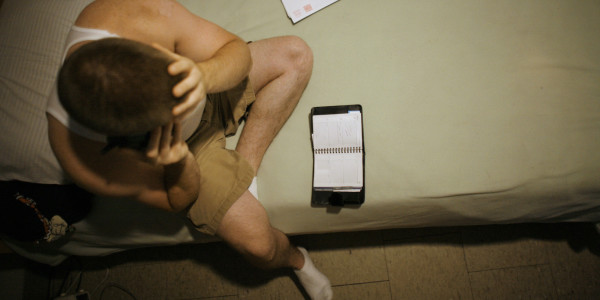

Where, exactly, is the intersection between religious faith and good science? Does it even exist? And might both be used by today’s military to build more resilient warriors?
America’s military is facing a very public mental health crisis. Many veterans view this crisis as a direct result of a flawed Veterans Affairs system and an uncaring American public. In turn, the VA points to abysmal therapy completion rates, piles more money into the budget, and continues serving up a top-down approach to care that is statistically ineffective. Public service announcements about veteran suicide grow America’s concern about the mental and emotional stability of its veterans.
In her bold, gripping new book, “Brave, Strong, True: The Modern Warrior’s Battle for Balance,” U.S. Marine veteran Dr. Kate Hendricks Thomas examines the virtues and flaws of the American military’s cultural mandates for strength and invulnerability. She argues that treatment for mental health issues requires a disempowerment narrative that is starkly at odds with our military’s cultural values. Treatment may be part of the solution, she says, but today’s military culture does not allow for it to be the complete answer.
What if, she suggests, the military developed and offered mental fitness training programs that shifted the paradigm from treatment to resilience?
A strengths-based approach, Thomas notes, would be more likely to resonate with modern-day warriors who embrace intensity, shared hardship, and challenge. Today’s service members voluntarily joined the military during wartime; difficult transformation and growth are part of our DNA.
“The research is clear,” writes Thomas. “We need to focus on resilience as something that can be learned and grown before combat and transition are experienced. Post-traumatic stress and depression must be reframed as normal, recoverable conditions. When we talk about them as disorders, we give them an inaccurate air of permanence.”
Moving with fluidity between veteran narratives and current research, Thomas unpacks three evidence-based components of resilience: social support, self-care, and spirituality.
“Social support is vital to our ability to grow through traumas,” says Thomas. “It is a known contributor to physical health and longevity. Having a trusted tribe around you lowers stress.”
The author points to Team Red, White, & Blue, a veteran fitness organization, as one example of a ready-made tribe offering modern-day warriors a valuable connection to other veterans and civilians.
(Left to right) U.S. Marine 1st Lt. Kate Hendricks Thomas stands with Capt. Abigail Steinke and 1st Lt. Gideon Grisset at Marine Corps Recruit Depot, Parris Island.

In a culture where pain is weakness leaving the body, the concept of self-care, which may include a balanced training calendar along with mindful eating and thinking, may seem especially alien, says Thomas.
However, self-care is ultimately (and perhaps counterintuitively) a way to increase physical and mental performance, she notes. It provides opportunities for self-mastery that build our capacity to handle future stressors more effectively.
Finally, Thomas tackles what is perhaps the most controversial chapter in her book — the chapter on faith.
“There is tremendous personal utility and some health benefit to personal, nonorganized spiritual practices,” writes Thomas. “However, the majority of religion and health science shows maximum benefit for people involved in organized religious communities.”
Thomas seems prepared to cater to skeptics. Readers who prefer to trade on hard facts over faith will appreciate her emphasis on multiple studies that overwhelmingly demonstrate how affiliation with an organized religion correlates positively to practical and statistical outcomes.
“Much like exercise, religion offers true protective effects against heart disease, depression, and even cognitive decline,” Thomas writes. “Religiosity is correlated positively with improved mental and physical well-being, and is important for people coping with trauma. How intensely involved a person is in their faith community strengthens the positive impact it can have.”
The brain’s response differs dramatically when engaged in mediation or prayer, Thomas notes. During mediation, the body’s stress response is calmed. In attentive prayer to a transcendent God, not only is the body’s stress response calmed, but the regions of the brain involved in love and relationship light up.
Thomas cites multiple studies to support the well-established connection between faith and wellness, but concludes this way: “The question of God’s existence and interest in our wellness cannot be answered by statistics. Belief is too personal for that and we must come to our own conclusions.”
The book ends with an emphasis on the value of peer leadership, community engagement, and active duty training in teaching and testing resilience.
Ultimately, “Brave, Strong, True” is a rousing challenge to health, packed with practical principles, and written for those of us weary of the victim narrative and looking for a more powerful way forward.
“Brave, Strong, True” (Innovo Publishing, 2015) is available for purchase.
